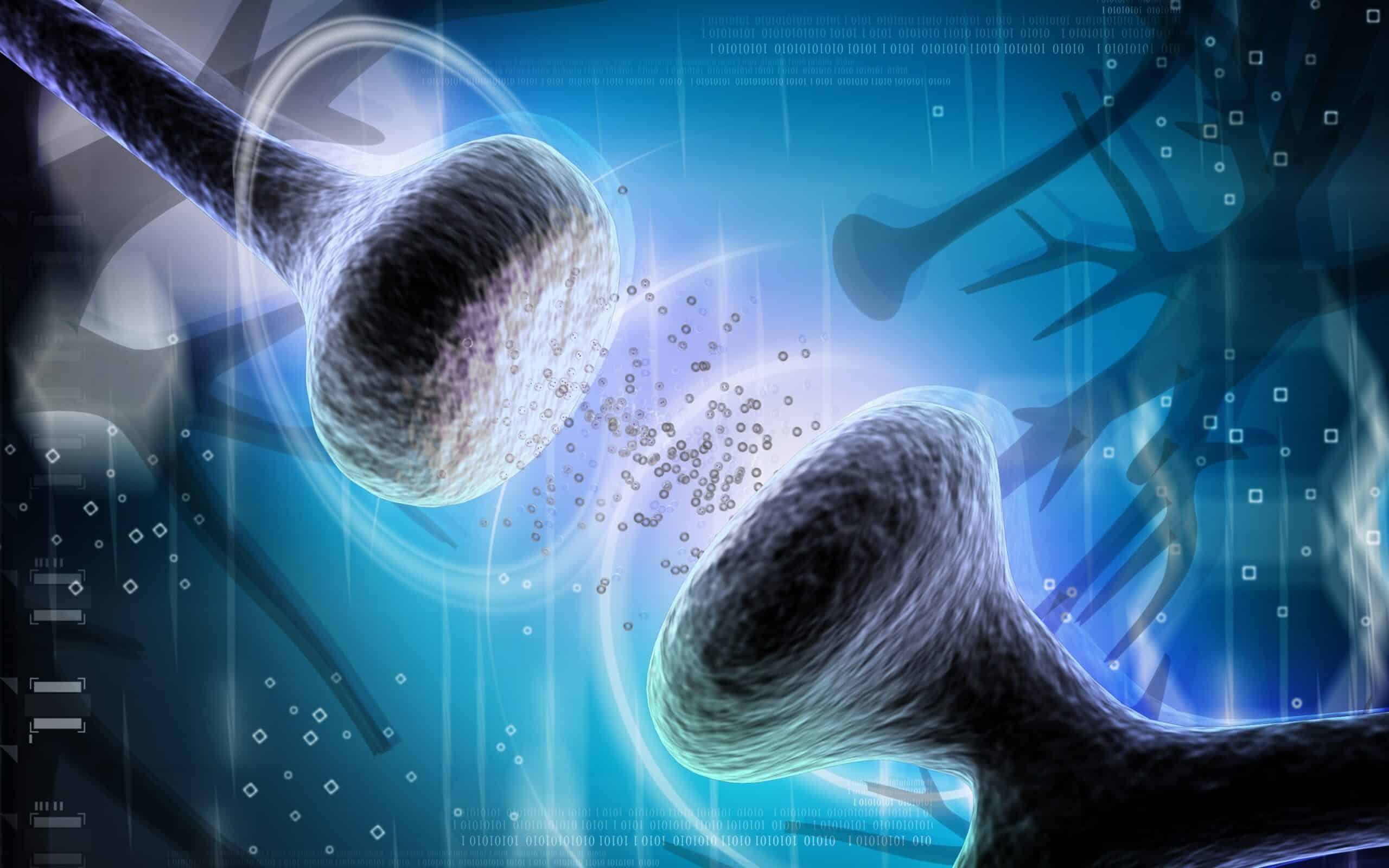Neurons have a complex inter-cell communication system, sending, receiving, and interpreting chemical signals with the help of specialized receptors at the neurons’ surface. Receptors help transmit information between neurons, responding when certain signals are activated in the body. For example, there are at least 14 types of serotonin-specific receptors, or serotonergic receptors, that respond throughout the brain when serotonin is released. Now, recent research shows that one serotonin-specific receptor — the single G protein-coupled receptor, also known as 5-HT2A — can impact how we process visual stimuli. Specifically, the receptor selectively suppresses incoming visual information in the visual cortex, processing it as “more” or “less” important.
The study, entitled “Gain control of sensory input across polysynaptic circuitries in mouse visual cortex by a single G protein-coupled receptor type (5-HT2A),” was published in Nature Communications earlier this year. Below, we outline how this research could help experts understand visual hallucinations — both in people under the influence of certain drugs, and in individuals with psychiatric disorders that may cause hallucinations.
Understanding Serotonin-Specific Receptors
The 5-HT2A receptor mentioned above is a serotonin-specific receptor, meaning that it receives and processes chemical signals from serotonin released in the brain. Serotonin is a neurotransmitter that plays a critical role in mood and memory, making it a key target in many psychiatric treatments. However, the aforementioned study published in Nature Communications found that the 5-HT2A receptor plays another important role: It “dampens” incoming visual stimuli. This is, overall, a positive action, as it allows the brain to process and interpret visual information more freely — essentially choosing how “important” certain visual information might be. However, these receptors can also be activating, potentially driving visual hallucinations in response to serotonin imbalances caused by hallucinogenic drugs or psychiatric conditions. To understand the connection, the research team had to delve deeply into the effects of receptors in the brain.
Investigating the Serotonin-Specific Receptor Mechanism
To investigate the full function of 5-HT2A receptors on the neural network, the research group introduced light-sensitive receptor proteins into neurons using viruses. The team genetically modified the light-sensitive receptor proteins, causing them to mimic serotonin-specific receptor function — but, unlike the 5-HT2A receptor, the imitation receptors could be turned on and off like a light switch. The team then tested these imitation receptors in mice fitted with ultra-thin optical fibers. These fibers delivered light to the appropriate brain region in the mouse subjects, allowing the team to observe the effects of the imitation 5-HT2A receptor on the subjects’ brains. This method allowed the researchers to observe something fascinating: The 5-HT2A receptor selectively suppresses the strength of incoming visual stimuli, determining how those visual stimuli are perceived.
This surprising function of the 5-HT2A receptor has numerous implications. First, researchers now believe that over-activating the 5-HT2A receptor — via hallucinogenic drugs, for example — causes the brain to create visual stimuli independent of external stimuli. In essence, these drugs quiet the visual stimuli surrounding the person — trees, cars, and other people — and allow the person to “dream up” nonexistent visual stimuli, thus prompting hallucinations. Interestingly, researchers hope that these findings could contribute to the development of new therapies for individuals with psychiatric conditions that lead to visual hallucinations. Psychedelic drugs that selectively target the 5-HT2A receptor, for example, could be used in therapeutic capacities to regulate individuals suffering from treatment-resistant psychiatric conditions.
To study psychiatric disorders and new drugs designed to treat their symptoms, Scantox Neuro offers the BTBR T+ tf/J and Fmr1-KO mouse models and related behavioral, histological, and biochemical readouts, such as anxiety, depression, and social behavior tests as well as molecular alteration of the serotonin pathway, parvalbumin, and neuroinflammation.
Scantox is the leading Nordic preclinical GLP-accredited contract research organization (CRO), delivering the highest grade of pharmacology and regulatory toxicology services since 1977. Scantox focuses on preclinical contract research services, supporting pharmaceutical and biotechnology companies with their drug development projects. Core competencies include explorative and efficacy studies, PK studies, general toxicology studies, local tolerance studies, wound healing studies, and vaccines. To learn more about our services and areas of study, please subscribe to our newsletter. And if you’re interested in partnering with us, please contact us online.











